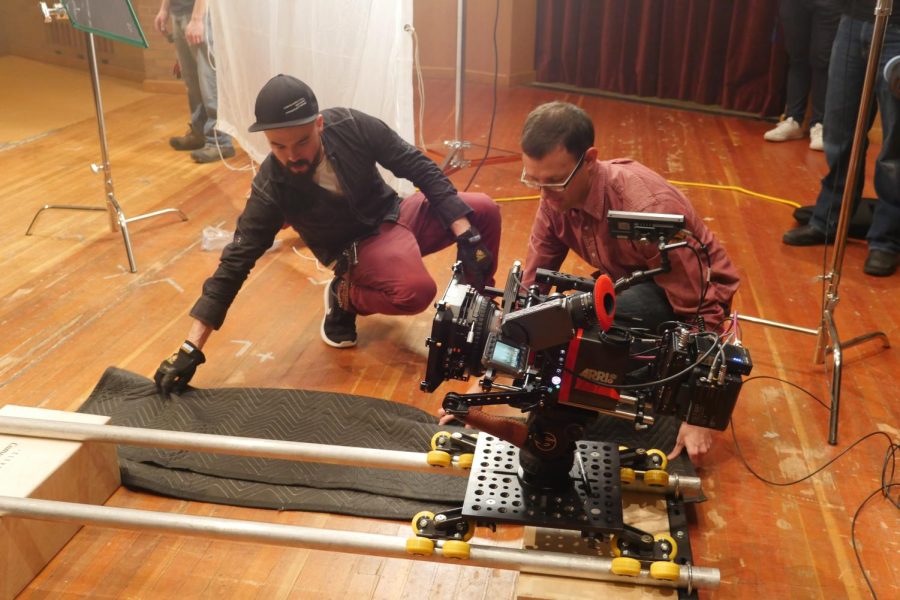Kent State spends $10,000 to air commercial during Olympics
February 17, 2018
Kent State spent $52,000 on the commercial featured during the Super Bowl and another $10,000 for the Olympics.
Jessica Chunat, a sophomore architectural studies major, said spending the $52,000 on the Super Bowl was a large expense for the university.
“Before we saw it, we were talking and saying that $52,000 is a lot of money,” Chunat said. “And when you break it down, it’s about $1 per person and change for all the students that are on campus, … and we didn’t think the Super Bowl was (the) greatest time to show it.”
Executive Director of University Media Relations Eric Mansfield, however, explained that from his perspective, the Super Bowl was the perfect time to show Kent State’s commercial on TV for the first time.
“That was a tremendous bargain for us because the audience for a Super Bowl is a once-a-year audience,” Mansfield said. “It’s significant. We’re looking at 1.5 million people who saw that ad in Northeast Ohio. So beyond just trying to attract new students, it’s also a chance for the alumni to look at that … and cheer for the ad, for their alma mater, just like they cheer for a big game.”
The cost might seem like a large number to students, but in retrospect, Mansfield said, $52,000 is a smaller number than it seems in the university’s budget.
“We have a budget; I don’t know the numbers off the top of my head, but it could easily be over $600 million, so $52,000 to you and me is a lot,” Mansfield said. “But if you go back and look at the approved budget, you’re spending a little over 1 percent of the university budget that goes to overall marketing and recruiting strategies, and that is very low in comparison.”
The Kent State in-house production team that worked on the commercial also kept the costs lower for the university.
“In the past, when we’ve decided to do a TV campaign with a commercial, our office has worked with an outside agency to do that,” Dustin Lee, a university employee, said. “That agency would then subcontract a video production company to do that commercial for them. So they’re actually paying for two different companies to do this work.”
Lee explained even with the expenses of catering, renting equipment and the hiring of additional crew, the commercial still came in under the actual cost and under the projected budget for the overall price of the Super Bowl air cost.
With costs staying under budget, the university also bought time for the commercial to be aired during the Olympics in the Northeast Ohio region, which cost an additional $10,000.
Chunat said the $10,000 could have been spent differently, and the commercial could have been pushed over social media instead.
“$52,000 for the commercial in the Super Bowl, another $10,000 for the Olympics, it is a lot,” Chunat said. “But I definitely think that if they put that large amount of money toward promotions and getting it viral online before putting it on TV, that would have been so much more beneficial.”
Mansfield, though, said the commercial for the Super Bowl and Olympics was the best way for the university to continue to market and reach new students.
“It’s part of the bigger picture — that we’re trying to raise the stature of the university,” Mansfield said. “We want to be known as a national public research university, and that puts us on a big stage. So being a part of the Super Bowl, the Olympics, bringing in tremendous speakers — if you want to attract great students, you have to have a great marketing strategy to tell people the Kent State story.”
Mansfield said the commercial is a part of a larger marketing strategy that will bring in students and families to reach the university’s goal of a dynamic freshman class and overall growth on Kent’s campuses.
“We’ve gone from 27,000 to over 40,000 students in the last 12 years,” Mansfield said. “So, we had to advertise to get to this point too. … It’s part of it.”
Francesca Barrett is the student finance reporter. Contact her at [email protected].
CORRECTIONS:
Dustin Lee’s title has been changed from the “director and editor of the commercial” to “university employee.”
The Kent State in-house production team worked on the commercial. The original article said “The production team” beforehand and has been changed for clarity.












